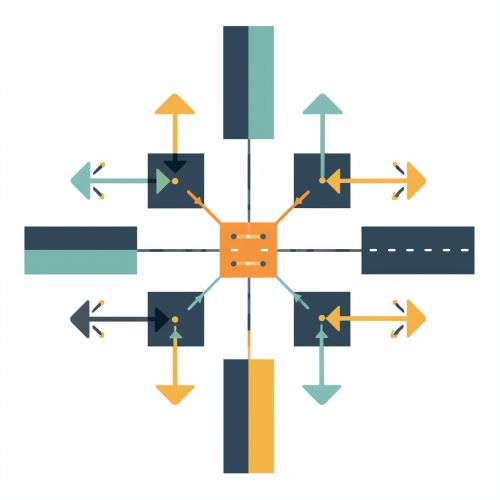Injection (mathematics): Difference between revisions
(Created page with "== Definition == In the field of mathematics, an injection (also known as an injective function or one-to-one function) is a function that maps distinct elements of its domain to distinct elements of its codomain. In simpler terms, an injective function does not map different elements to the same element. This concept is fundamental in many areas of mathematics, including set theory, algebra, and topology. == Forma...") |
No edit summary |
||
| (One intermediate revision by the same user not shown) | |||
| Line 5: | Line 5: | ||
Formally, a function ''f'' from a set ''X'' to a set ''Y'' is defined as injective if for every ''x1'' and ''x2'' in ''X'', whenever ''f(x1) = f(x2)'', then ''x1 = x2''. This definition can also be written in the contrapositive form: if ''x1 ≠ x2'', then ''f(x1) ≠ f(x2)''. | Formally, a function ''f'' from a set ''X'' to a set ''Y'' is defined as injective if for every ''x1'' and ''x2'' in ''X'', whenever ''f(x1) = f(x2)'', then ''x1 = x2''. This definition can also be written in the contrapositive form: if ''x1 ≠ x2'', then ''f(x1) ≠ f(x2)''. | ||
[[Image:Detail-77809.jpg|thumb|center|A visual representation of an injective function. It shows a set X and a set Y with arrows from each element in X to a unique element in Y.|class=only_on_mobile]] | |||
[[Image:Detail-77810.jpg|thumb|center|A visual representation of an injective function. It shows a set X and a set Y with arrows from each element in X to a unique element in Y.|class=only_on_desktop]] | |||
== Properties of Injective Functions == | == Properties of Injective Functions == | ||
Latest revision as of 21:58, 7 May 2024
Definition
In the field of mathematics, an injection (also known as an injective function or one-to-one function) is a function that maps distinct elements of its domain to distinct elements of its codomain. In simpler terms, an injective function does not map different elements to the same element. This concept is fundamental in many areas of mathematics, including set theory, algebra, and topology.
Formal Definition
Formally, a function f from a set X to a set Y is defined as injective if for every x1 and x2 in X, whenever f(x1) = f(x2), then x1 = x2. This definition can also be written in the contrapositive form: if x1 ≠ x2, then f(x1) ≠ f(x2).


Properties of Injective Functions
Injective functions have several important properties. For instance, the composition of two injective functions is always injective. Moreover, the inverse of an injective function, if it exists, is also injective. These properties make injective functions particularly useful in various branches of mathematics.
Composition
If f : X → Y and g : Y → Z are both injective functions, then the composition function g ∘ f : X → Z is also injective. This property can be proven directly from the definition of injectivity.
Inverse Function
If f : X → Y is an injective function, then it has a left inverse g : Y → X such that g ∘ f = IdX, where IdX is the identity function on X. If f is also surjective, then g is a two-sided inverse, meaning that f ∘ g = IdY as well.
Injective Functions in Different Fields of Mathematics
Injective functions play a crucial role in various fields of mathematics. Here are a few examples:
Set Theory
In set theory, injective functions are used to define and work with cardinal numbers, which generalize the concept of the size of a set.
Algebra
In algebra, injective functions are used in the definition of isomorphisms between algebraic structures. For example, a group homomorphism is an isomorphism if and only if it is bijective, which requires it to be both injective and surjective.
Topology
In topology, injective functions are used in the definition of embeddings, which are injective continuous functions that induce a certain type of homeomorphism between a topological space and a subspace of another.
